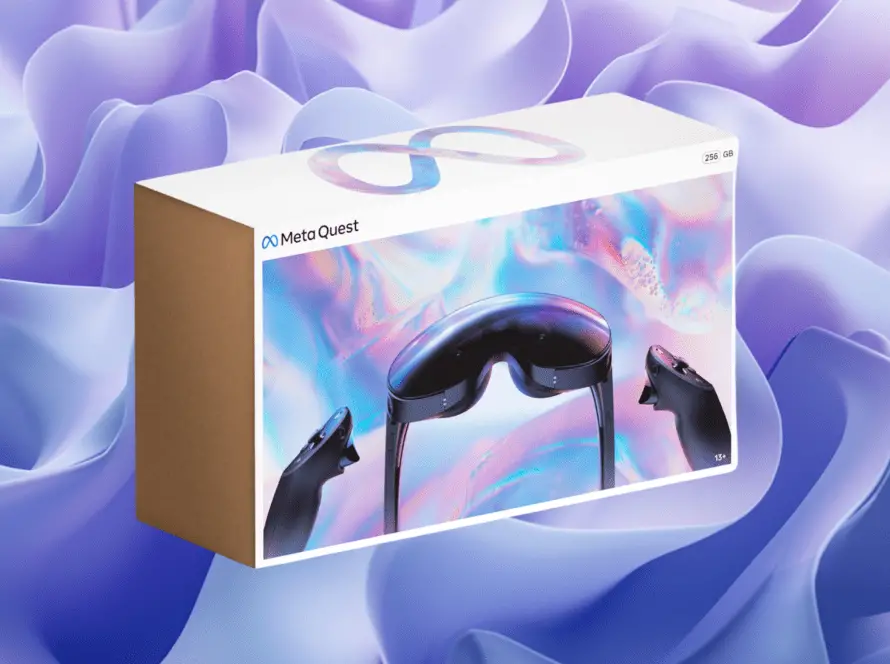The evolving landscape of wearable technology, a new contender has emerged with the promise to redefine our interaction with digital devices the smart ring.
As we step into 2024, these diminutive yet powerful gadgets are garnering attention for their ability to seamlessly integrate advanced technology into the very fabric of daily life, all while maintaining the unassuming appearance of a traditional piece of jewelry.
The Ultrahuman Ring AIR serves as a prime example of this innovative trend, encapsulating a wealth of health monitoring and device control capabilities within its sleek, ring-shaped form factor.
This introduction of smart rings by leading tech companies, including a noteworthy teaser by Samsung for its upcoming Galaxy Ring, marks a pivotal moment in the wearables market.
Smart rings stand out for their discreet nature, effortlessly blending the line between fashion and functionality, making them one of the most intriguing developments in wearable tech.
As we delve deeper into the world of smart rings, it becomes evident that these devices are not merely an extension of existing wearables but represent a significant leap forward.
Equipped with a variety of sensors and smart features, smart rings offer a unique combination of health tracking, personal security, and digital convenience, all wrapped up in a package that’s as easy to wear as it is to forget you’re wearing it.
Capabilities of Smart Rings
Smart rings encapsulate a remarkable blend of technology and style, offering various features despite their diminutive size.
These wearable devices stand out for their ability to track various health metrics seamlessly, including heart rate, blood oxygen levels, sleep quality, daily steps, and stress levels, all with minimal user input. Beyond health monitoring, smart rings extend their functionality to digital convenience and personal security.
Thanks to integrated gesture recognition technology, they enable users to control connected devices and interact with smart home systems through simple gestures. This allows for actions like dimming lights, adjusting thermostats, or even playing music with a finger flick.
Smart rings offer haptic feedback for notifications, providing discreet alerts for incoming calls, messages, and app notifications, which helps reduce the reliance on constantly checking smartphones.
Some smart rings are equipped with NFC technology, enabling contactless payments by merely waving a hand over a compatible terminal, offering a seamless checkout experience.
They can also function as secure digital keys, facilitating access control to unlock doors or personal devices, enhancing both security and convenience. Beyond their technological capabilities, intelligent rings are designed with an eye for aesthetics, mirroring traditional jewellery in their appearance.
This design philosophy ensures that they serve as functional gadgets and fashionable accessories, with various styles, materials, and colours available to cater to diverse personal tastes.
The convergence of these features in smart rings demonstrates a significant leap forward in wearable technology, pointing towards a future where digital experiences are more integrated into our daily lives without being obtrusive, all encapsulated within a small, stylish ring.
Advantages Over Fitness Trackers
Smart rings offer several advantages over traditional fitness trackers, primarily due to their compact and unobtrusive design. Unlike fitness bands or watches, smart rings are designed to be worn continuously, providing constant health monitoring without the discomfort or inconvenience associated with larger devices.
This continuous wearability ensures consistent data collection, particularly for heart rate and sleep patterns. This leads to potentially more accurate and comprehensive health insights.
Their discreet nature allows smart rings to seamlessly integrate into any lifestyle or fashion choice, making them more likely to be worn consistently.
The aesthetic appeal of smart rings, which closely resemble traditional jewellery, further encourages their use over bulkier fitness trackers, ensuring that users benefit from continuous health tracking without compromising on style or comfort.
Upcoming Innovations
The future of smart rings is brimming with potential, driven by technological advancements and growing consumer interest. A notable upcoming innovation in this space is Samsung’s Galaxy Ring, poised to make a significant impact upon its release.
While details remain under wraps, the anticipation suggests that Samsung may introduce features that enhance connectivity, health monitoring, and user interface, potentially setting new standards for what smart rings can achieve.
The industry is on the cusp of integrating more advanced health monitoring technologies into smart rings, such as blood pressure and glucose level tracking.
This evolution could be a game-changer, especially for individuals with specific health conditions like diabetes, offering a non-invasive and convenient way to monitor vital health metrics continuously.
These innovations reflect a broader trend towards more personalized, accessible, and comprehensive health and wellness tracking, all packaged in a discreet and fashionable accessory.
As these technologies mature and integrate into smart rings, we expect them to become indispensable tools for health management, digital connectivity, and personal security, further solidifying their position in the wearable tech landscape.
Market Impact and Consumer Adoption
The emergence and evolution of smart rings are set to significantly impact the wearable technology market, potentially influencing consumer adoption patterns in several ways.
As these devices become more sophisticated, offering a blend of health monitoring, digital convenience, and aesthetic appeal, they will likely attract a broader demographic looking for unobtrusive yet functional wearables.
The market impact of smart rings could mirror the trajectory seen with fitness trackers, which initially catered to fitness enthusiasts but eventually found widespread appeal due to their utility, affordability, and diversity in design.
Smart rings, with their discrete form factor and advanced capabilities, could appeal to tech-savvy consumers and those interested in fashion and personal accessories, broadening their market reach.
Consumer adoption may be further driven by the entry of major tech companies like Samsung into the smart ring space. High-profile launches can generate increased interest and credibility, encouraging more consumers to consider smart rings as viable alternatives to traditional wearables.
For smart rings to achieve mainstream adoption, key factors such as price competitiveness, user experience, and the tangible benefits of their features will be crucial.
As the technology advances and prices potentially become more accessible, smart rings could see a surge in consumer adoption, becoming a staple in the wearable tech ecosystem alongside smartwatches and fitness bands.

Challenges and Limitations
Despite the promising advancements in smart ring technology, several challenges and limitations need addressing to ensure their wider adoption and usability.
One of the primary challenges is the device’s small form factor, which, while advantageous for wearability and aesthetics, imposes constraints on battery life and the inclusion of more advanced sensors and features.
The compact size limits the amount of technology that can be integrated, potentially affecting the device’s overall functionality and performance compared to larger wearables.
Another significant limitation is the absence of a display, which restricts smart rings’ user interface and interaction capabilities. Users must rely on connected smartphones to access detailed data and notifications, which might not be as convenient for those seeking standalone functionalities in their wearables.
Sizing and fit pose practical challenges, as a ring must fit perfectly to ensure comfort and accurate sensor readings. This can complicate purchasing, particularly for online orders, where sizing errors can lead to returns and dissatisfaction.
Privacy and security concerns also loom large, as continuous health monitoring and data collection raise questions about how personal data is stored, used, and protected. Ensuring robust data security measures is crucial to gaining and maintaining user trust.
Addressing these challenges will be essential for manufacturers and developers as they innovate and refine smart ring technologies, aiming to enhance their appeal and practicality for a broader user base.
The Future of Smart Rings
The future of smart rings looks promising as they stand at the intersection of technology, fashion, and health. As these devices evolve, we can anticipate significant advancements that will enhance their functionality, integration, and appeal to a wider audience.
One of the most exciting prospects for smart rings is the integration of more advanced health monitoring capabilities. Technologies capable of tracking blood pressure, glucose levels, and other vital health metrics non-invasively are expected to mature, making smart rings an indispensable tool for health and wellness management.
This will not only benefit the general population but also provide critical support for individuals with chronic conditions, offering a convenient and continuous way to monitor their health.
In addition to health tracking, future smart rings are likely to offer improved connectivity and interaction features, making them more versatile and user-friendly.
Enhanced gesture control, more intuitive interfaces with connected devices, and seamless integration with the broader Internet of Things (IoT) ecosystem will expand their utility beyond simple notifications and basic commands.
The aesthetic aspect of smart rings will also continue to evolve, with more designers and brands entering the market to offer a wider range of styles, materials, and customization options. This will help smart rings transition from niche gadgets to fashionable accessories that appeal to a diverse user base, further driving adoption.
As sustainability becomes increasingly important, we may see smart rings designed with eco-friendly materials and energy-efficient technologies, aligning with broader environmental goals.
Final thoughts
The journey of smart rings from a futuristic concept to a tangible wearable technology reflects the incredible strides made in miniaturizing and integrating sophisticated functionalities into everyday accessories.
As we look ahead, it’s clear that smart rings hold immense potential to transform our interaction with technology, health monitoring, and digital connectivity while emphasizing style and discretion.
The evolution of smart rings will likely continue to be driven by advancements in sensor technology, battery life, and user interface design, making them even more integral to our daily lives.
The challenge for manufacturers and developers will be to balance innovation with usability, ensuring that these devices not only push the boundaries of what’s technically possible but also meet users’ practical and aesthetic needs.
As consumer awareness and acceptance grow, smart rings become a staple in the wearable technology landscape, akin to the smartphone’s evolution. Their ability to blend seamlessly into our lives, offering a subtle yet powerful interface to our digital world, positions smart rings as a critical component of the future of personal technology.
The future of smart rings is not just about the technology itself but about how it integrates into the fabric of our daily lives, enhancing our health, productivity, and connectivity in an unobtrusive yet impactful way.


